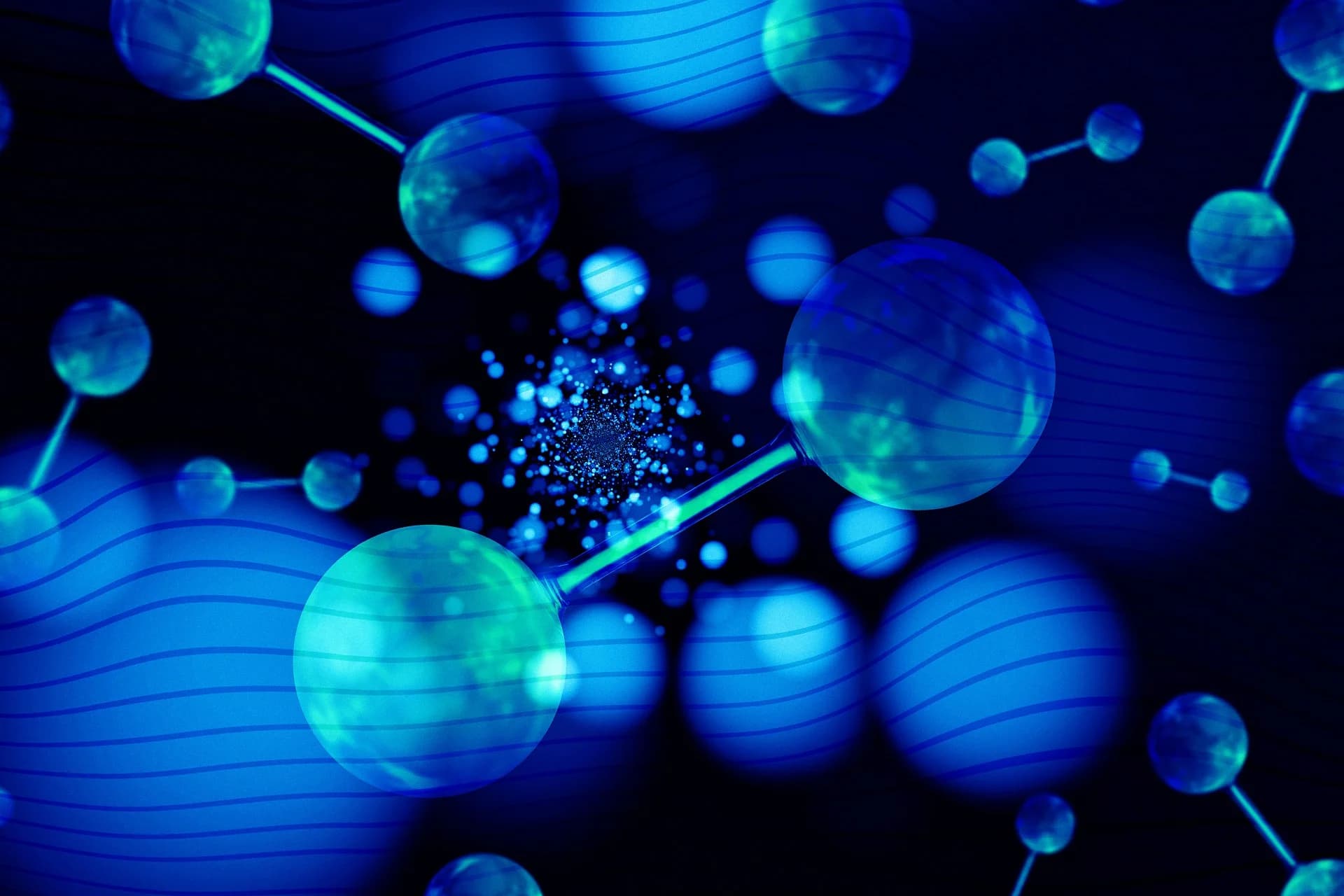A molecule with 22 nuclear spins challenges the world's best classical computers more severely than another with 50 spins—a counterintuitive finding revealed by researchers that illuminates quantum computing's real potential.
This discovery comes from research submitted June 18, 2025, by German quantum software company HQS Quantum Simulations, which developed a systematic framework for evaluating quantum computing applications. Their ITBQ framework—Identify industry problem, Transform to quantum format, Benchmark against classical methods, and Show Quantum Advantage—suggests that Nuclear Magnetic Resonance (NMR) spectroscopy offers the most promising path to quantum advantage, while revealing significant challenges for other anticipated applications.
The timing matters for security planning. Researchers in the field describe "harvest now, decrypt later" scenarios—where adversaries collect encrypted data today, storing it until quantum computers become powerful enough to break current encryption methods. Understanding which quantum applications will actually work has become increasingly important for both defense strategies and research investment decisions.
The Molecular Complexity Puzzle
1,2-di-tert-butyl-diphosphane—with only 22 strongly coupled spins—defeats such clustering. An exact classical solution is still possible by exploiting local SU(2) symmetry, but standard clustering strategies fail here. In short: 22 strongly coupled spins foil clustering; 50 weakly coupled spins are clusterable.
"The dimensionality of the NMR problem in exact representation scales with the number of spins N as O(2^N)," the researchers explain. In practical terms, this means computational requirements double with each additional spin—25 spins require over 33 million calculations, while 50 spins would need an astronomically large number of calculations. But coupling strength matters more than size. Weakly interacting spins behave like independent actors that can be grouped and approximated, while strongly coupled systems act like synchronized dancers where every movement affects all others, demanding exact solutions.
This specificity, the researchers argue, explains why NMR spectroscopy emerged as quantum computing's most promising near-term application. The technique, which chemists use daily to identify molecular structures and doctors rely on for MRI scans, operates on fundamentally quantum mechanical principles, making quantum computers natural simulators for these systems according to the analysis.
The Transformation Challenge
While hardware improvements make headlines—with companies achieving 99.9% gate fidelities (the accuracy of quantum computing operations, with Quantinuum's cloud-accessible device being a notable example)—the researchers identified a different challenge entirely through their ITBQ framework.
"Software for transforming real-world problems into quantum-computer-ready formats remains in its infancy," the study notes. Most transformations require case-by-case customization. The framework's second step—Transform to Quantum—often proves more difficult than building the quantum computers themselves.
Industrial optimization exemplifies this challenge, according to the study. These problems must be converted to QUBO format (Quadratic Unconstrained Binary Optimization)—essentially forcing complex real-world puzzles into simple yes/no questions that quantum computers can process. But as the researchers point out, real industrial problems are "neither quadratic nor unconstrained." The transformation process itself can eliminate any potential quantum advantage, they note, like trying to capture a three-dimensional sculpture in a flat photograph.
The study emphasizes that "only a small subset of the problem might benefit from using the quantum computer and needs to be efficiently extracted from a larger problem." No systematic tools exist for this extraction. Teams must manually identify quantum-suitable subproblems—if they exist at all—like searching for needles in haystacks without knowing what needles look like.
Learning from Benchmarking History
The framework's third criterion—benchmarking against optimized classical solutions—highlights important lessons from the field's development. The study references D-Wave's early quantum optimization results, which initially showed advantage over the CPLEX solver but later faced reassessment, as the researchers documented.
"CPLEX is not the best possible solver for the type of problem addressed by the D-Wave architecture," researchers noted. When more specialized classical algorithms were applied, the performance gap narrowed considerably. Similar patterns emerged with other demonstrations, including a recent large-scale quantum spin simulation that classical computers successfully reproduced within weeks.
"Continuous advances in conventional software could narrow or erase any incipient quantum advantage," the researchers observe. Classical methods continue evolving, with the community regularly finding ways to match quantum demonstrations using optimized classical approaches—a moving target that keeps getting faster.
Assessing Chemistry Applications
The framework's evaluation of quantum chemistry applications provides measured insights into long-held assumptions about quantum computing's potential.
Ground-state calculations—long considered a natural fit for quantum computing—face specific challenges, the team found. Many molecules at equilibrium display single-reference character (where one electron configuration dominates), meaning classical methods like density functional theory handle them efficiently, according to their assessment. Quantum computers excel at strongly correlated systems where multiple electron configurations contribute significantly, but these represent a minority of chemical problems, the study indicates. The researchers cite analysis suggesting "exponential quantum advantage is unlikely across broad chemical space, with polynomial speedups being a more realistic outcome."
Multireference chemistry for catalysts and excited states showed moderate promise but remains unproven. The framework awarded it three out of five stars for industrial relevance and transformation capability, but only two stars for demonstrating quantum advantage. Radical molecules with unpaired electrons offered an innovative hybrid approach—combining small quantum calculations with classical approximations—scoring similarly modest ratings across the evaluation criteria.
As for industrial optimization, despite its enormous economic potential, current evidence suggests at best polynomial speedup, the researchers conclude, insufficient given quantum computers' slower gate times compared to classical processors—like winning a race with a faster car that needs hour-long pit stops.
NMR's Narrow Path Forward
Against this measured backdrop, NMR spectroscopy stands out with consistently high scores across all criteria. The team found that time evolution of spin systems—the heart of NMR—maps naturally onto quantum computers. According to their analysis, while classical computers must store exponentially growing matrices that quickly exceed all available memory, quantum computers evolve the system directly through time.
HQS reports developing sophisticated preprocessing pipelines combining RDKit, CREST, and ORCA software to transform molecular structures into NMR parameters. This addresses the transformation bottleneck that plagues other applications, they explain. Clear benchmarking targets exist through classical NMR solvers, providing concrete goalposts for measuring progress, according to the study. The exponential scaling, the researchers assert, make quantum advantage for strongly coupled systems promising.
The framework rates NMR highest across all four criteria: genuine industry need with four stars (chemists use NMR daily, pharmaceutical companies depend on it for drug development), mature transformation tools earning four stars (HQS's automated pipeline), rigorous benchmarking capability receiving five stars (against their classical solver), and a clear if challenging path to advantage garnering four stars (exponential scaling for coupled spins).
A Focused Future
The ITBQ framework provides systematic criteria for evaluating quantum computing opportunities, revealing that success requires more than just better hardware. Applications scoring highly across all four criteria, like NMR, represent specific problems where quantum mechanics provides natural computational advantages—where the universe's quantum rules work in our favor rather than against us.
The research suggests quantum computing's impact will be targeted rather than universal—serving as a specialized tool for inherently quantum mechanical problems that classical computers struggle with by their very nature. With quantum devices achieving unprecedented fidelities, the researchers conclude the limiting factor isn't building better quantum computers but identifying and properly transforming the right problems to run on them.
The paradox that opened this story—22 spins defeating supercomputers while 50 spins compute successfully—captures quantum computing's essential challenge. Raw size doesn't determine difficulty; the nature of the problem does. For researchers and investors betting on quantum's future, this framework offers a reality check: the path to quantum advantage is narrower than hoped, but clearer than before. Success lies not in universal quantum supremacy but in finding those specific cases where quantum mechanics isn't just useful—it's essential.
Source: arXiv:2506.15426 - "What is a good use case for quantum computers?" by Michael Marthaler, Peter Pinski, Pascal Stadler, Vladimir Rybkin, Marina Walt (HQS Quantum Simulations GmbH)



